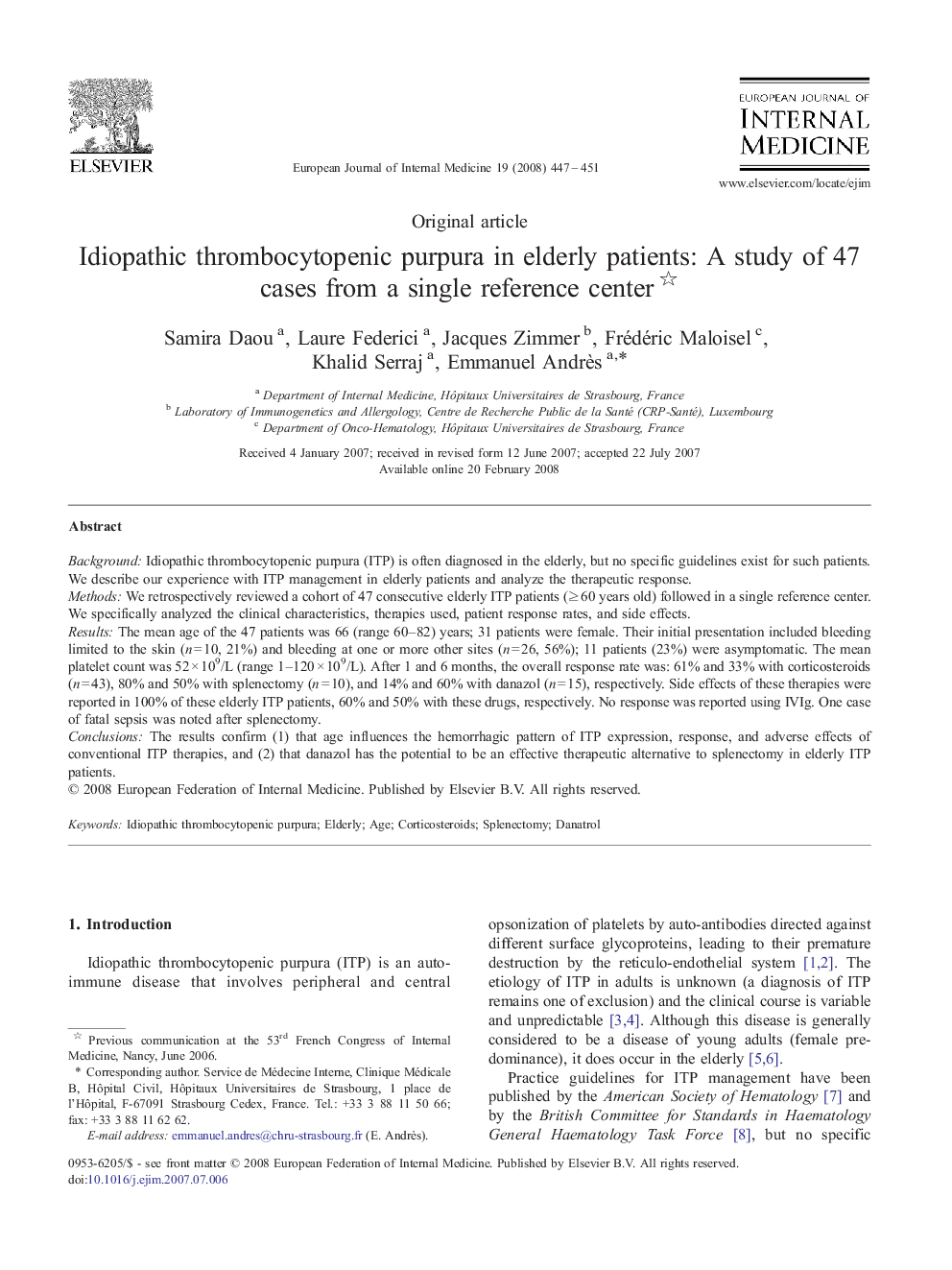| Article ID | Journal | Published Year | Pages | File Type |
|---|---|---|---|---|
| 3467964 | European Journal of Internal Medicine | 2008 | 5 Pages |
BackgroundIdiopathic thrombocytopenic purpura (ITP) is often diagnosed in the elderly, but no specific guidelines exist for such patients. We describe our experience with ITP management in elderly patients and analyze the therapeutic response.MethodsWe retrospectively reviewed a cohort of 47 consecutive elderly ITP patients (≥ 60 years old) followed in a single reference center. We specifically analyzed the clinical characteristics, therapies used, patient response rates, and side effects.ResultsThe mean age of the 47 patients was 66 (range 60–82) years; 31 patients were female. Their initial presentation included bleeding limited to the skin (n = 10, 21%) and bleeding at one or more other sites (n = 26, 56%); 11 patients (23%) were asymptomatic. The mean platelet count was 52 × 109/L (range 1–120 × 109/L). After 1 and 6 months, the overall response rate was: 61% and 33% with corticosteroids (n = 43), 80% and 50% with splenectomy (n = 10), and 14% and 60% with danazol (n = 15), respectively. Side effects of these therapies were reported in 100% of these elderly ITP patients, 60% and 50% with these drugs, respectively. No response was reported using IVIg. One case of fatal sepsis was noted after splenectomy.ConclusionsThe results confirm (1) that age influences the hemorrhagic pattern of ITP expression, response, and adverse effects of conventional ITP therapies, and (2) that danazol has the potential to be an effective therapeutic alternative to splenectomy in elderly ITP patients.
